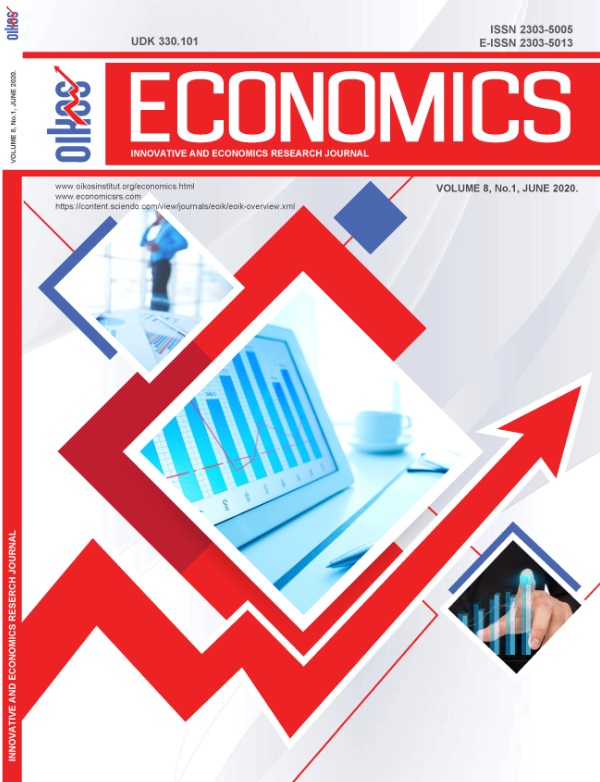PRODUCTIVITY BIAS HYPOTHESIS: NEW EVIDENCE FROM PARALLEL MARKET EXCHANGE RATE
DOI:
https://doi.org/10.2478/eoik-2020-0003Abstract
Aim/ Purpose: The purpose of this study is to investigate Productivity Bias Hypothesis (PBH) in
Nigeria using parallel (black) market exchange rate.
Design/Methodology/Approach: The study focused on Naira-Dollar (N/$) parallel market exchange
rate. Quarterly data from 1995 to 2018 were used. Data on domestic productivity and parallel
market exchange rate were sourced from Central Bank of Nigeria (CBN) statistical bulletin, 2018
edition. US productivity data was sourced from Federal Reserve Economic Data. Autoregressive
Distributed Lag (ARDL) was used as the estimation technique.
Findings: The result reveals that parallel (black) market exchange rate support the presence of
productivity bias hypothesis in Nigeria. Furthermore, the purchasing power parity hypothesis was
rejected using the conventional unit root test. This implies that using official exchange rate, the
study rejects the productivity bias hypothesis.
Research Implications/Limitations: The implication of the study is that exchange rate in Nigeria
should be determined freely in the foreign exchange market.
Originality/Value/Contribution: Previous studies have used official exchange rate to test the validity
of the productivity bias hypothesis, and the results can be basically described as mixed. Hence, this
study differs from extant studies as it examined productivity bias hypothesis using parallel market
exchange rate.
